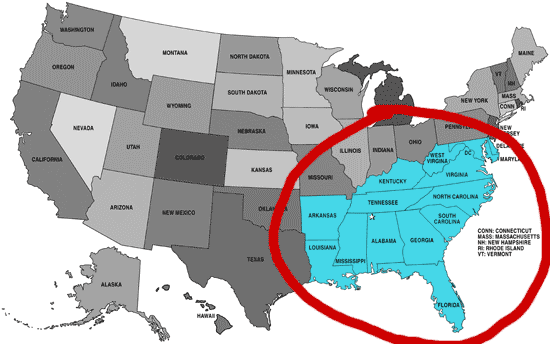 | ||
Josh turner deep south audio
The Deep South is a cultural and geographic subregion in the Southern United States. Historically, it is differentiated from the "Upper South" as being the states most dependent on plantation-type agriculture and considered slave societies during the pre–Civil War period. The Deep South was also commonly referred to as the Lower South or the Cotton States, for their production of cotton as the primary commodity crop.
Contents
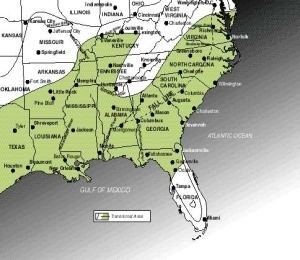
Before the out-migrations from the Deep South during the first half of the 20th century, African-descended peoples, whose ancestry also often included the British Isles, comprised the majority of the population in numerous counties and some states. Today, the Deep South is usually delineated as being those states and areas where the cultural elements most often thought of as "Southern" exist in their most concentrated form.
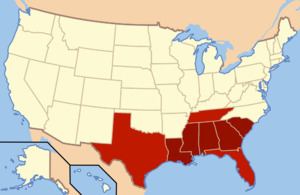
Usage
The term "Deep South" is defined in a variety of ways:
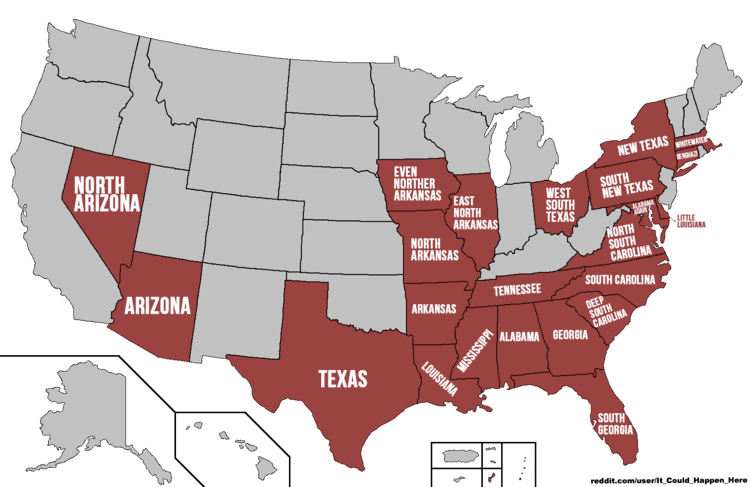
Origins
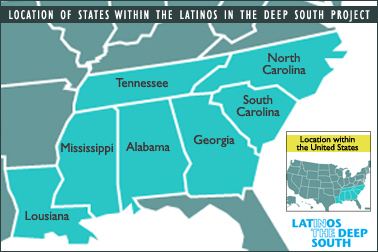
Though often used in history books to refer to the seven states that originally formed the Confederacy, the term "Deep South" did not come into general usage until long after the Civil War ended. Up until that time, "Lower South" was the primary designation for those states. When "Deep South" first began to gain mainstream currency in print in the middle of the 20th century, it applied to the states and areas of Georgia, southern Alabama, Florida, Mississippi, north Louisiana, and East Texas, all historic areas of cotton plantations and slavery. This was the part of the South many considered the "most Southern".
Later, the general definition expanded to include all of South Carolina, Georgia, Alabama, Mississippi, and Louisiana, and often taking in bordering areas of East Texas and North Florida. In its broadest application today, the Deep South is considered to be "an area roughly coextensive with the old cotton belt from eastern North Carolina through South Carolina west into East Texas, with extensions north and south along the Mississippi". Houston is the largest city of the Deep South region.
People
European Americans or whites in every part of the Deep South except for southern Louisiana have often identified as having predominately English ancestry, but numerous Irish and Scots-Irish immigrants and migrants also entered the region. They sometimes served as overseers on plantations. In the 1980 Census, of those people who identified solely by one European national ancestry, most European Americans identified as being of English ancestry in every Southern state except Louisiana, where more people identified as having French ancestry.
With regards to people in the Deep South who reported only a single European-American ancestry group in 1980, the census showed the following self-identification in each state in this region:
These figures to do not take into account people who identified as "English" and another ancestry group. When the two were added together, people who self identified as being of English with other ancestry, made up an even larger portion of southerners. South Carolina was settled earlier than those states commonly classified as the Deep South. Its population in 1980 included 578,338 people out of 1,706,966 people in the state who identified as "English" only, making them 33.88% of the total population, the largest national ancestry group by a large margin.
The map to the right was prepared by the Census Bureau from the 2000 census; it shows the predominant ancestry in each county as self-identified by residents themselves. Note: The Census said that areas with the largest "American"-identified ancestry populations were mostly settled by descendants of colonial English and others from the British Isles, French, Germans and later Italians. Those who are African-descended tended to identify as African American, although many of historically mixed-race families also have ancestors of British Isles or Northern European ancestry.
As of 2003, the majority of African-descended Americans in the South live in the Black Belt counties.
Politics
From the 1870s to the early 1960s, conservative whites of the Deep South held control of state governments and overwhelmingly identified as and supported the Democratic Party, Even former Whigs belonged. The most powerful leaders belonged to the party's moderate-to-conservative wing. At the same time, numerous Republicans, primarily African Americans, continued to be elected in local offices through the 1880s and into the 1890s. The Republicans also controlled many mountain districts on the fringe of the Deep South.
At the turn of the 20th century, all of the Southern states, starting with Mississippi in 1890, passed new constitutions and other laws that effectively disenfranchised the great majority of blacks and sometimes many poor whites as well. Blacks were excluded subsequently from the political system entirely. The white Democratic-dominated state legislatures passed laws to impose white supremacy and Jim Crow, including racial segregation of public facilities. The region became known in politics as “Solid South” for decades: while this disenfranchisement was enforced, all of the states in this region were one-party states dominated by white Southern Democrats. Its representatives accrued outsized power in the Congress and the national Democratic Party, as they controlled all the seats apportioned to southern states based on total population but represented only (the richer subset of) white voters. During this same period, the number of lynchings of blacks by whites reached a peak in the region; the most deaths annually were in the years shortly before the turn of the century, when economic problems and stress were high in the region.
Major demographic changes ensued in the 20th century; during the two waves of the Great Migration, a total of six million African Americans left the South for opportunities in the North, Midwest and West Coast. In some areas, white migration increased into the South, especially since the late 20th century. Beginning with the Goldwater–Johnson election of 1964, a significant contingent of white conservative voters in the Deep South stopped supporting national Democratic Party candidates and switched to Republicans. They still voted for many Democrats at the state and local level into the 1990s.
The Republican Party in the South had been crippled by the disenfranchisement of blacks, and the national party was unable to relieve their injustices in the South. During the Great Depression and the administration of Democrat Franklin D. Roosevelt, some New Deal measures aided African Americans across the country and in the poor rural South, as well as poor whites. In the post-World War II era, Democratic Party presidents and national politicians began to support desegregation and other elements of the Civil Rights Movement, from President Harry S. Truman's desegregating the military, to John F. Kennedy's support for non-violent protests. These efforts culminated in Lyndon B. Johnson's important work in gaining Congressional approval for the Civil Rights Act of 1964 and Voting Rights Act of 1965. Since then, upwards of ninety percent of African Americans in the South and the rest of the nation have voted for the Democratic Party, including 93 percent for Obama in 2012 and 88 percent for Hillary Clinton in 2016.
White southern voters consistently voted for the Democratic Party for many years, in order to hold onto Jim Crow Laws. However, once Franklin Delano Roosevelt came to power in 1932, the limited southern electorate found itself supporting Democratic candidates who frequently did not share its views.
The weird thing about Jim Crow politics is that white southerners with conservative views on taxes, moral values, and national security would vote for Democratic presidential candidates who didn’t share their views. They did that as part of a strategy for maintaining white supremacy in the South. (Yglesias 2007).
One opinion piece attributed the political and cultural changes, along with the easing of racial tensions, as the reason why southern voters began to vote for Republican national candidates, in line with their political ideology. Since then, white Southern voters have voted for Republican candidates in every presidential election except in the 1976 election when Georgia native Jimmy Carter received the Democratic nomination, the 1980 election when Carter won Georgia, the 1992 election when Arkansas native and former governor Bill Clinton won both Georgia and Louisiana, and the 1996 election when the incumbent president Clinton again won Louisiana. In 1995, Georgia Republican Newt Gingrich was elected by representatives of a Republican-dominated House as Speaker of the House.
Since the 1990s the white majority has continued to shift toward Republican candidates at the state and local levels. This trend culminated in 2014, when the Republicans swept every statewide office in the region midterm elections. As a result, the Republican party came to control all the state legislatures in the region, as well as all House seats that were not representing majority-minority districts.
Continuing demographic changes are likely to influence regional politics: many educated African Americans are migrating back to the South, and taking professional and middle-class jobs; there have been waves of immigration from Latino countries of Mexico, and Central and South America; and white northerners have also moved to the South for jobs or to retire.
Presidential elections in which the Deep South diverged noticeably from the Upper South occurred in 1928, 1948, 1964, 1968, and, to a lesser extent, in 1952, 1956, 1992, and 2008. Former Arkansas Governor Mike Huckabee fared well in the Deep South in 2008 Republican primaries, losing only one state (South Carolina) while running (he had dropped out of the race before the Mississippi primary).
